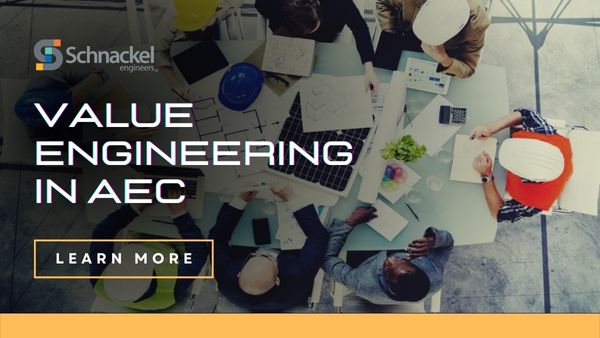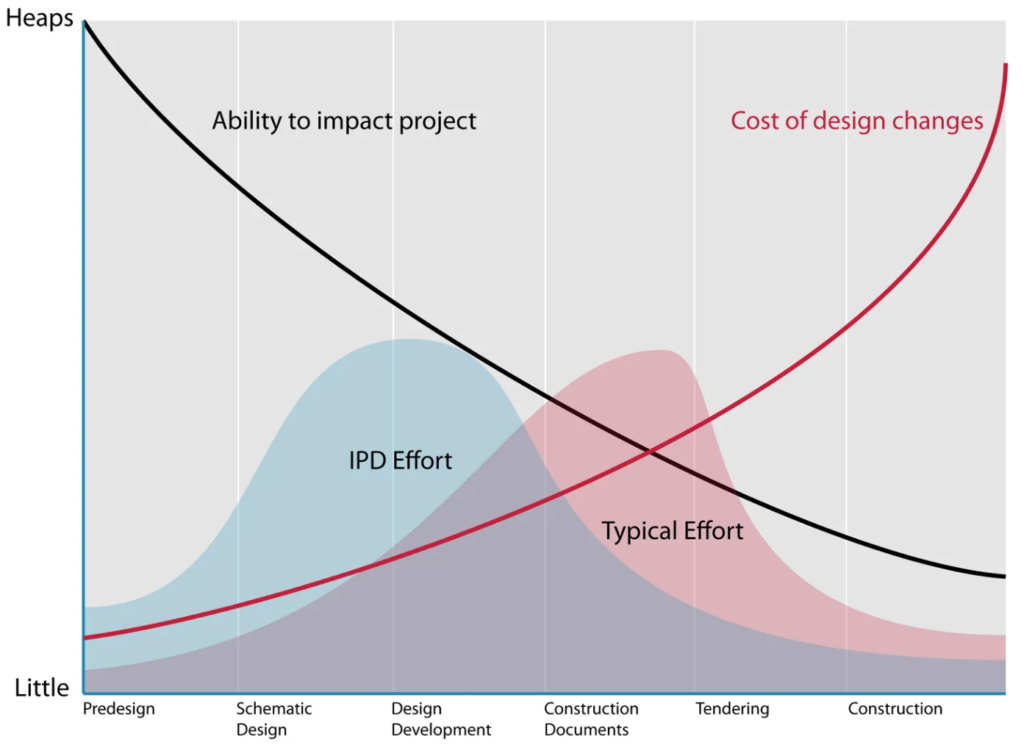Value Engineering in AEC

Value engineering is a critical component of the architecture, engineering, and construction (AEC) process. It can help save time and money on projects while still delivering a high-quality product. But what is value engineering exactly? And how can it be used in AEC? This blog post will take a closer look at value engineering, and how it can be used in the AEC industry. We’ll also explore some of the benefits of applying VE to your projects very early in the process to achieve maximum benefit.
What is Value Engineering?
In general terms, value engineering is a systematic process that is used to optimize the value of a product or service. Value engineering aims to improve the quality of the product or service while also reducing costs. This process is typically used during the design phase of a project or product, but it can also be applied to existing products and services.
Value engineering involves identifying a product’s or service’s essential functions and then finding ways to improve the design while maintaining these essential functions. This process can improve the quality of a product or service while simultaneously reducing costs. Ultimately, value engineering is all about creating products and services that offer the best value for the money.
What is Value Engineering in AEC?
Value engineering as applied to the AEC industry is a systematic method used to improve the “value” of the building or construction project by using an examination of the function and the cost of the components that make up the building. Value is the ratio of function to cost, and value can be manipulated by either improving function, reducing, cost or both.
The focus on value improvement has long been a part of the architecture, engineering, and construction industry, but it was not until the early 1970’s that a structured Value Engineering Methodology began to emerge. In its 1974 publication, “A Guide to Value Engineering,” the American Society for Quality Control (now ASQ) defined value engineering as: “A logical technique for identifying and developing less expensive ways to satisfactorily perform certain selected key functions.”
In order to ensure all stakeholders will derive the maximum benefits commensurate with their investments, the value engineering process should be built into a project from its earliest stages of design. Unfortunately, this rarely happens. Most value engineering exercises start at the end of design, after the bids come in and the cost must be reduced to meet the owner’s budget. Introduced at this stage, value engineering, unfortunately, tends to be a series of compromises between cost and product or service quality, instead of a value creation process, which can occur during design. In post design value engineering it is more about what is on the “chopping block” to get to a buildable budget.
To combat the post design “value engineering” exercise, sustainable development and Integrated Project Delivery (IPD) have emerged as an important goal for AEC professionals. An increasing body of evidence suggests that IPD, sustainable development and value engineering, integrated into the design process, are complementary approaches for achieving improved overall project outcomes.
How Does Value Engineering Work?
Identifying the Main Elements of the Project
The first step in value engineering is to identify the project’s main elements. This includes the functional elements (what the product or service does) and the non-functional elements (how well it performs). Once the main elements have been identified, they can then be prioritized in terms of importance or impact on the value creation process. This will help to ensure that resources are allocated to the most critical elements first.
Analyzing Functions of Those Elements
After identifying the main elements of a project, the next step in value engineering is to analyze the functions of those elements. This helps to identify essential functions that can be modified or eliminated. The goal is to find ways to improve the project while still meeting the original objectives. This often involves looking for simpler and more efficient solutions. By analyzing the functions of the project elements, value engineering can often find ways to improve the project while still meeting the original objectives, and reducing costs in the process.
Developing Alternative Solutions To Deliver Those Same Functions
After analyzing the functions of essential elements, the third step of value engineering is to develop alternative solutions to deliver those same functions. This step allows the team to explore different options and find the best possible way to achieve the goal or function. It is also important to consider the cost of each option and how well it meets the needs of the project. Once the team has developed a list of potential solutions, they can move on to the fourth step of value engineering, assessing the alternative solutions.
Assessing the Alternative Solutions
The fourth step of value engineering is assessing alternative solutions. This step is vital because it helps to identify the most promising solution. Architects and engineers consider factors, such as cost, weight, strength, durability, and appearance to assess alternative solutions. In some cases, multiple solutions may be equally viable and the decision comes down to personal preferences. Once the most promising solution has been identified, the team can move on to the next step, allocating costs to alternative solutions.
Allocating Costs to the Alternative Solutions
After the value engineering team has completed its analysis and identified the most promising alternative solutions, it is time to allocate costs to each solution. This step is essential because it helps identify the most cost-effective solution. The team must consider the materials, labor, and other resources required for each solution to allocate costs. Alternative solutions may also have an impact on other systems in the building, which may require modification to accommodate the chosen alternative. Once the costs have been properly assessed and allocated, the team can compare each solution’s total cost and select the one that offers the best value for money. This is how value engineering improves the overall value delivered to the owner.
Implement Changes
After allocating costs to alternative solutions, the final step of value engineering is to implement changes. This usually happens during the construction phase; however, up-front value engineering during the design or planning stage reaps the maximum benefit. The graph below is known the MacLeamy Curve, developed by Patrick MacLeamy at HOK during the early 2000’s. This curve demonstrates the benefit of integrating VE into the project during design, instead of after the design is complete and the budget is in trouble.

It is important to remember that value engineering is a continuous process, so even after the changes have been implemented, it is still essential to monitor the results and make further changes if necessary.
The goal of value engineering is to improve the quality of the project while also reducing costs, so it is essential to keep this in mind when making changes. By carefully monitoring the results of the changes, the team can ensure that the project is on track and is providing the best value for the owner’s money.
Bottom Line
Value engineering is a process that can be used in the architecture, engineering, and construction (AEC) industry to save time and money. It involves looking at all aspects of a project and finding ways to reduce costs without sacrificing quality. The sooner value engineering is introduced into the project the more beneficial it becomes. Value engineering upfront has the greatest impact and the most positive outcome for the owner. The goal is to create a final product that meets or exceeds the client’s expectations while staying within budget.
Schnackel Engineers’ AI for MEP technology provides the ultimate in value engineering. From the very beginning of the design, this revolutionary technology automatically searches for the most cost effective solution to the routing and sizing of the MEP systems, offering a 10-30% savings vs. conventional engineering methods. If you are considering a project in the near future and want to ensure you achieve maximum value, contact Schnackel Engineers today for more information on how we can help you save money with AI technology and sensible value engineering.
Comments